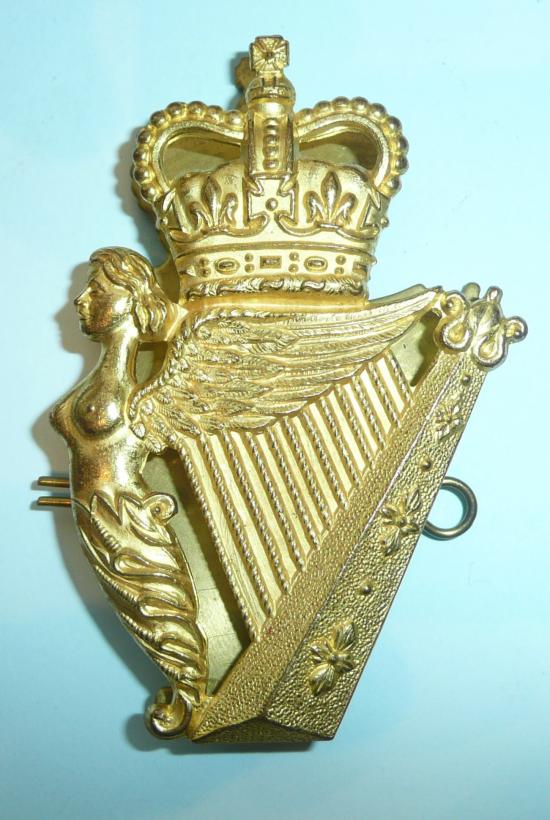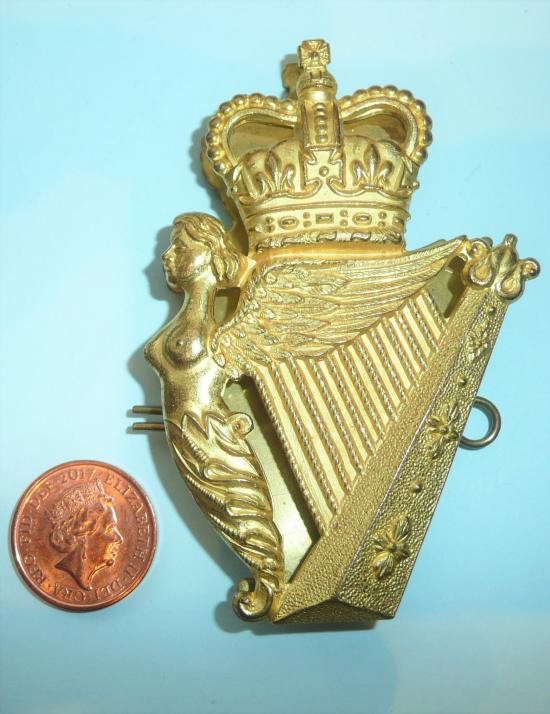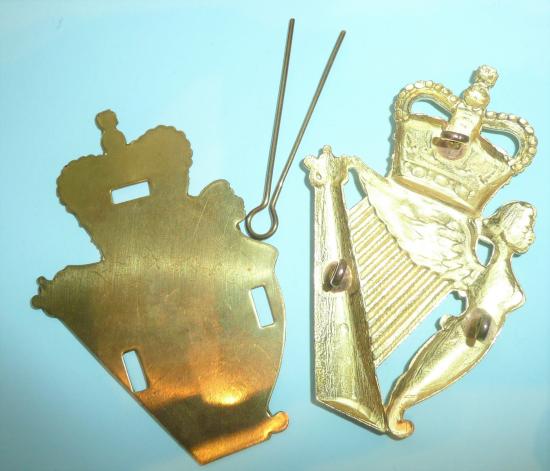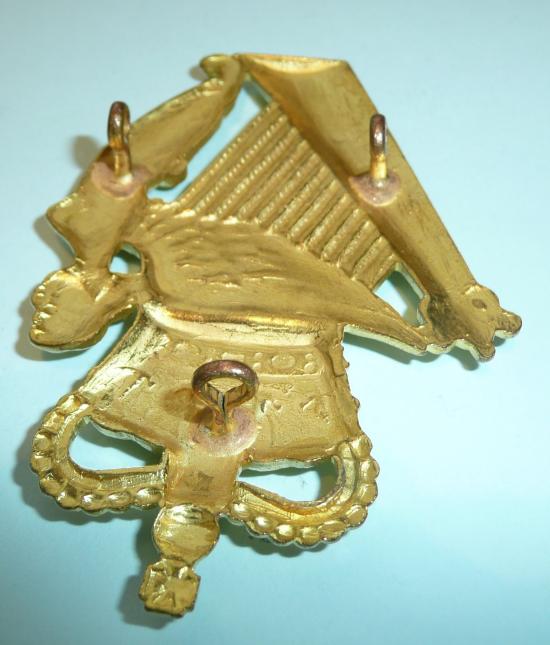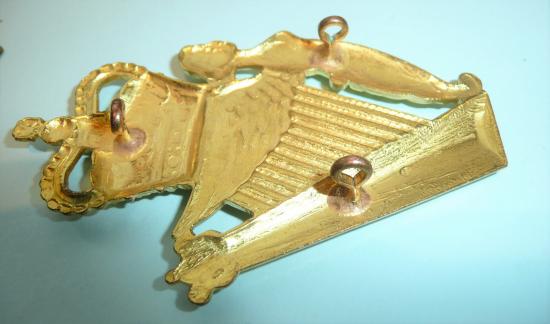Ulster Defence Regiment UDR Pipers Caubeen Glengarry Cap Badge
An impressively large badge, with three original loops to the reverse. Gilt bright with original shaped backing plate. Circa 7.8cm tall.
The Ulster Defence Regiment (UDR) was an infantry regiment of the British Army established in 1970, with a comparatively short existence ending in 1992. Raised through public appeal, newspaper and television advertisements, their official role was the "defence of life or property in Northern Ireland against armed attack or sabotage" but unlike troops from Great Britain they were never used for "crowd control or riot duties in cities". It was the largest infantry regiment in the British Army, formed with seven battalions plus another four added within two years.
It consisted mostly of part-time volunteers until 1976, when a full-time cadre was added. Recruiting in Northern Ireland at a time of intercommunal strife, some of its (mostly Ulster Protestant) members were involved in sectarianism. The regiment was originally intended to more accurately reflect the demographics of Northern Ireland, and began with Catholic recruits accounting for 18% of its soldiers; for various reasons, by the end of 1972 this had dropped to around 3%. It is doubtful if any other unit of the British Army has ever come under the same sustained criticism as the UDR. Uniquely in the British Army, the regiment was on continuous active service throughout its 22 years of service. It was also the first infantry regiment of the British Army to fully incorporate women into its structure. In 1992, the UDR was amalgamated with the Royal Irish Rangers to form the Royal Irish Regiment. In 2006, the regiment was retroactively awarded the Conspicuous Gallantry Cross, which entitled it to be known as The Ulster Defence Regiment CGC.
Comm RoHa (B1)
Code: 63059

